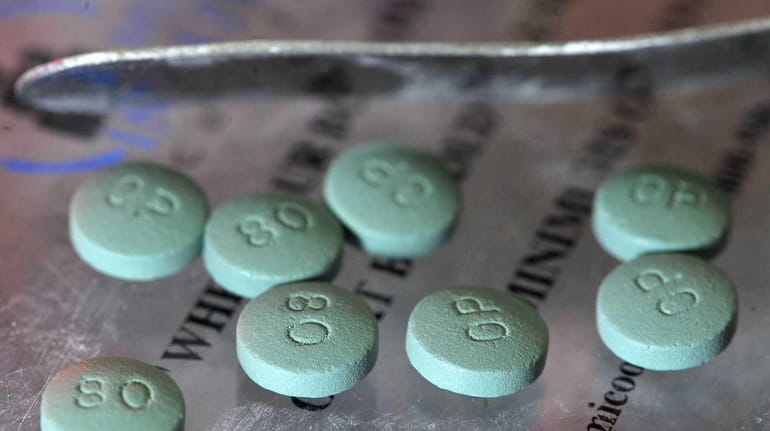Don't declare victory in opioid war

Opioids on a table. Credit: Newsday/Audrey C. Tiernan
That fatal opioid overdoses on Long Island dropped nearly 24 percent last year is great news and reverses a decade-long trend that’s cumulatively claimed the lives of more than 5,000 of our loved ones and neighbors.
But as we celebrate the progress, let’s not forget that 147 people in Nassau and 308 in Suffolk still lost their lives to a disease that’s preventable and treatable. Those numbers will climb a bit as medical examiners finalize death investigations and the body count widens if we add fatalities associated with alcohol, other drugs and suicides among those battling addiction.
The decline in deaths reflects a nationwide trend and as we gain ground, it’s easy to wonder how many lives would have been saved had we acted sooner or why we weren’t better prepared to stop an epidemic that spiraled from prescription painkillers to heroin and then to Fentanyl. Addiction, after all, isn’t new.
It is, however, a disease that has been steeped in stigma, and the denial associated with addiction gave heroin a 10-year running head start, especially in middle-class suburban areas. Mention heroin back then and most Long Islanders imagined someone stumbling around a graffiti-filled New York City shooting gallery, not a cheerleader from Garden City, college student from Huntington or stressed-out Southampton dad working two jobs.
As reality hit home and impacted families began speaking out, things started to change. The widespread distribution of naloxone — an opioid overdose reversal agent — has given countless Long Islanders a second shot at life and peer navigators in emergency rooms now ushers overdose survivors into treatment. New county, state and federal funds support local prevention programs, expanded treatment initiatives including 24/7 crisis centers and mobile units, and recovery coaching. Physician training and consumer education, along with electronic prescribing and tracking, have curbed opioid overprescribing. And new law enforcement community partnerships and diversion programs that emphasize treatment over incarceration better balance understanding with accountability.
Our collective efforts are finally paying off and we may be at a tipping point, but what we do next matters. On the prevention front, New York State should require evidence-based K-12 substance abuse education in schools and districts should take a second look at their mental health services.
Regulators should continue to pursue insurance companies who shirk their responsibilities and refuse to pay for comprehensive addiction treatment. Predatory marketers touting substandard out-of-state treatment centers should be prosecuted and local treatment options should be expanded. Consumers need better access to the three FDA-approved medications designed to treat opioid addiction — buprenorphine, naltrexone and methadone.
Long Island remains one of the few major metropolitan areas in the United States without a recovery high school. Substandard sober homes remain unregulated and dangerous. While each county now has a recovery community center, we could use more, especially on the East End. In short, there’s more to be done.
Fewer overdose deaths is a worthy milestone, but last year another 450 sick and struggling people landed in the county morgue instead of treatment center. Their families have joined thousands of others who are suffering the unthinkable as they eye the empty chairs at weddings, family gatherings and the dinner table. That’s not a victory, but a call to redouble our efforts until the overdose rate is zero and we are better prepared for the next drug that threatens our families and communities.
Jeffrey L. Reynolds is president and chief executive of Family & Children’s Association, which provides addiction treatment and mental health services in Nassau and Suffolk.
